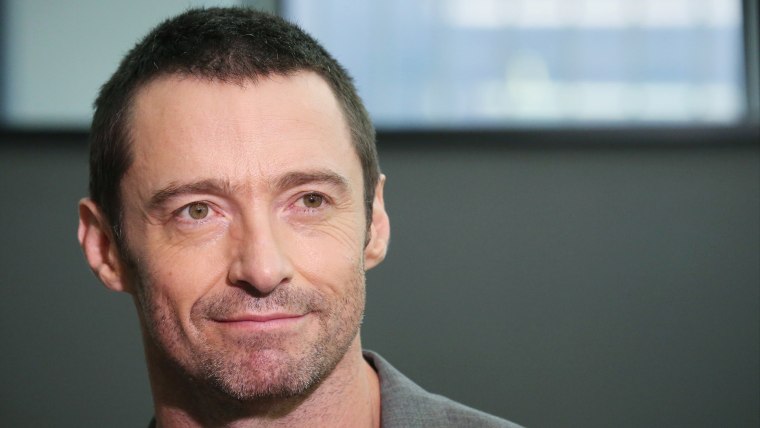Hugh Jackman, 46, has had a third surgery to remove a skin cancer lesion. The Tony and Emmy winner used the treatment as a reminder about the dangers of sun exposure, posting one word Monday on his Instagram account: SUNSCREEN.
Jackman’s lesions are the most common type of skin cancer—basal cell carcinoma — that kills in only extremely rare cases, but can be severely disfiguring if it is left untreated for too long.
The "Wolverine" star had a mark on his nose removed last November and another in May, when he posted an Instagram photo after the procedure.
That’s not unusual, according to the American Cancer Society. After treatment, basal cell carcinoma can come back in the same place — such as the actor's nose— and up to half of people who have one lesion will get a new skin cancer within 5 years.
Basal cell is the most common kind of skin cancer with over 2 million cases per year, says Dr. Jenny Kim, a professor of clinical medicine in the department of dermatology at the David Geffen school of Medicine at the University of California, Los Angeles.
“The risk for basal cell carcinoma directly correlates with the amount of sun one has received,” says Kim. “You can prevent the development of basal cell carcinoma by protecting your skin from damage from the sun and from tanning beds. The important point he is making is that you can prevent this by using sun screen.”
While wearing sunscreen will prevent further damage to the skin, you can’t roll back the clock on years of sun worship and stints on the tanning bed, Kim says. So, if you’ve spent a lot of time in the sun and have already had one lesion develop, chances are you’ll get another during your lifetime. But protecting your skin will lower the risk, Kim says.
These lesions tend to be “almost like a mole without color,” Kim says. “They can be a skin colored or pearly bump. Sometimes people think they are nothing and let them go.”
The problem with that is that basal cell carcinomas can be disfiguring if they aren’t treated and allowed to keep growing.
The larger they get, the larger the scar that will be left when they are eventually removed, Kim says. “In cases where they’ve been left to grow for a long time, you need a very large flap of skin to correct it. A dime size lesion on the trunk isn’t a big deal, but if it’s on the nose or the lips or the ears that’s another thing.”
Kim has seen lesions that were allowed to grow so large a reconstructive surgeon had to be called in to repair the damage.
Jackson’s rep says the actor is “okay now” following the treatment, according to People.
But even if basal cell carcinoma can be treated when caught early, doctors it’s a lot easier to just protect your skin.
“And it’s not just sun screen,” Kim says. “There are other behaviors we can change, like sitting in the shade rather than in the midday sun and wearing protective clothing, hats and sunglasses. They all add to protection.”
Other types of skin cancer include squamous cell carcinoma, which strikes 100,000 each year and the deadliest type, melanoma, which accounts for 70,000 cases per year.
Linda Carroll is a regular contributor to NBCNews.com and TODAY.com. She is co-author of "The Concussion Crisis: Anatomy of a Silent Epidemic” and the recently published “Duel for the Crown: Affirmed, Alydar, and Racing’s Greatest Rivalry”
